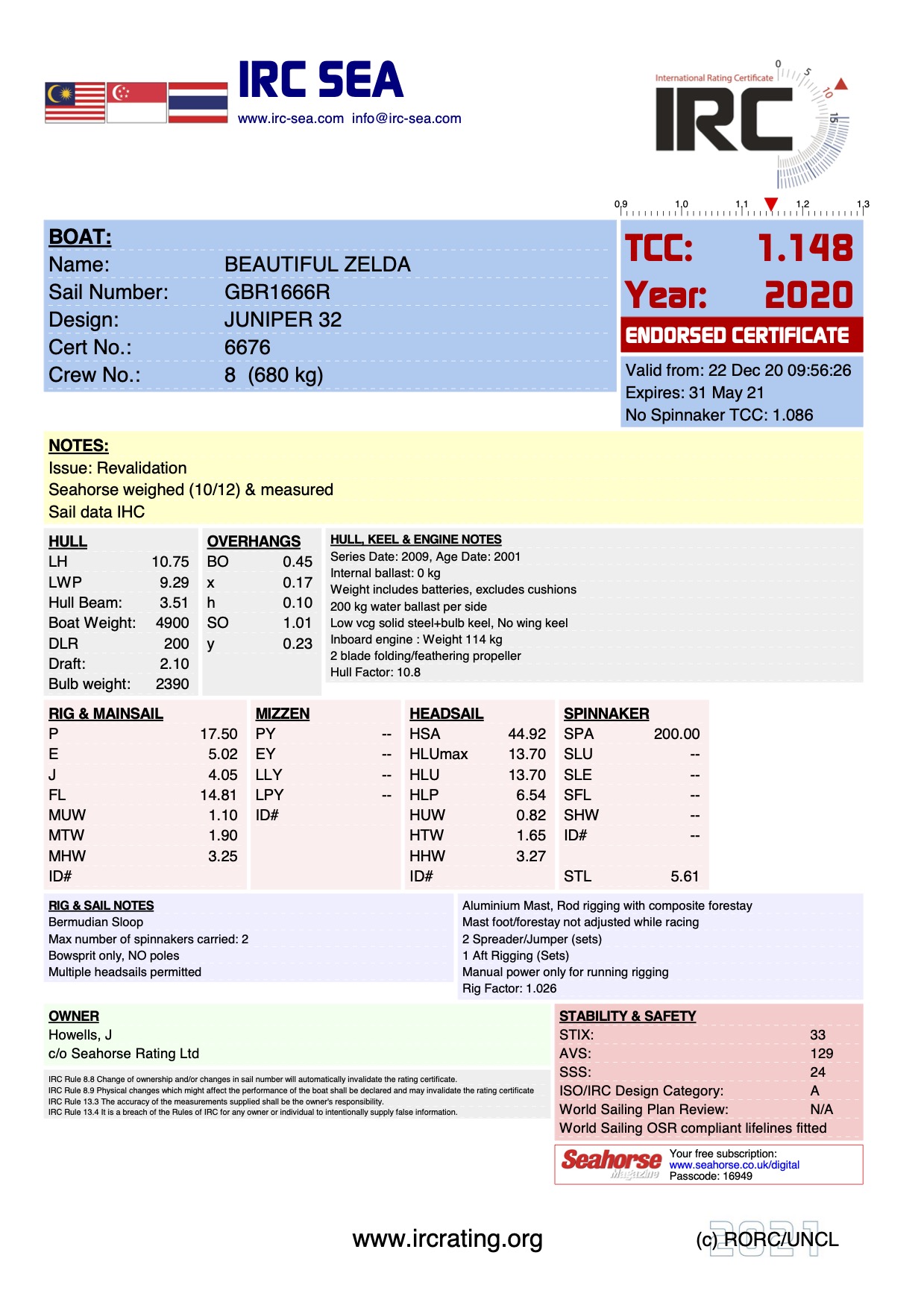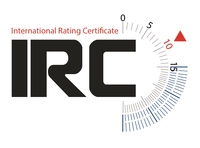2021 Certificate design
 Sunday, May 16, 2021 at 12:15PM
Sunday, May 16, 2021 at 12:15PM 
2021 Revalidation
 Sunday, May 16, 2021 at 12:11PM
Sunday, May 16, 2021 at 12:11PM 2021 revalidation will commence from 18th May 2021.
We are pleased to announce that new application and revalidation fees for boats up to 17.99m LH have been held at 2020 prices.
IRC 2020 Revalidation
 Monday, May 11, 2020 at 7:29PM
Monday, May 11, 2020 at 7:29PM 
We start processing 2020 certificates from 18th May.
2020 forms are published in the downloads section.
In preparation for your revalidations, below is a brief summary of changes to the 2020 rating calculations.
Answers to common questions are also included in the "Info for 2020 Applications" section.
This is not an exhaustive list of every development in the new software, but covers the main changes and has been produced to help owners understand changes to IRC ratings.
All these are applied automatically in the software, which is applied across the whole IRC fleet.
WHISKER POLES

The use of poles set to leeward to act as struts for the sheeting of headsails is becoming more common, both with boats rated for headsail only and boats rated with spinnakers, who can use a whisker pole provided a spinnaker is not set. Due to current lack of clarity provided by the current Racing Rules & ERS the IRC Rules and definitions to clarify that the current configurations are permitted with an impact to TCC.
IRC Rules now read:
21.3.5 Boats will be rated according to whether they use a spinnaker pole, whisker pole and/or a bowsprit according to the following configurations:
- (a) No spinnaker pole (spinnaker tacked on deck) or a centre line bowsprit only.
- (b) An articulating bowsprit only.
- (c) Spinnaker pole(s) and/or whisker pole(s) either with or without a bowsprit.
Whisker Pole - A spar attached to the mast spar to set a headsail. ERS F.1.4(d)(ii) does not apply.
Those boats previously rated with a spinnaker and either ‘no spinnaker pole or bowsprit’ or ‘bowsprit only’ who have declared that they use a whisker pole will see an increase in their TCC for 2020. The rating effect will depend on the specific configuration of the boat.
VARIABLE BALLAST
IRC has recognised single- and double-handed sailing for many years with the option to have an additional, short-handed certificate in a different configuration. With the increased growth of short-handed sailing in recent years, the idea of adding low-volume water ballast (equivalent to 3 or 4 crew members) is developing in the minds of designers and sailors.
Water ballast boats do not represent a large number in the overall worldwide IRC fleet but we wish to ensure that this development is rated appropriately.The IRC technical committee have therefore updated the variable (eg. water) ballast formulation and also the rules around variable and moveable ballast configurations. Variable ballast volume must be declared and, if available, the maximum list angle. See IRC 2020 Rule 22.3.
The rating effect will depend on the specific configuration of the boat.
IRC KEEL TYPES
The IRC technical committee have identified an improvement to help transition the rating between different keel types, and the rating formula for certain keel types has been updated and now uses a keel aspect ratio. This update may not increase the rating for your boat but will help to separate between keel types in the IRC rating framework.The rating effect will depend on the specific configuration of the boat.
SAIL AREA
The rating of mainsail area has been reviewed; boats with small mainsail widths relative to E may see an increase in rating.
Published by the IRC Rating Authority
BULB WEIGHT Changes for 2020
 Monday, May 11, 2020 at 7:27PM
Monday, May 11, 2020 at 7:27PM BULB WEIGHT
There are various rule changes for 2020 and these include the bulb weight definition.
Please note that we have not asked every boat to check and confirm their bulb weight at revalidation as for most boats the bulb weight increase from a standard fin attachment plate is insignificant in rating terms.
IRC’s primary focus is on the boats with overly large connections such as the Maxi 72s, TP52s, etc.and the need to deter exploitation of the IRC bulb weight definition.
The number of boats for which this definition change is significant is a very small percentage of the IRC fleet, and for this reason we did not overtly request bulb weight from every boat at revalidation; however the bulb weight definition change for 2020 has been widely publicised.
It is the owner's responsibility to ensure that any change to the rated bulb weight to comply with the 2020 definition is declared at revalidation.


